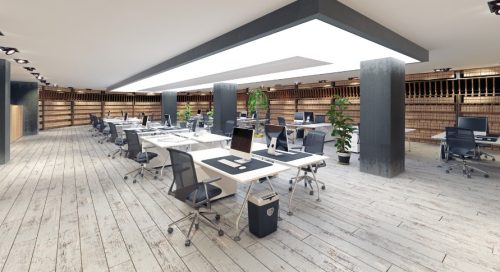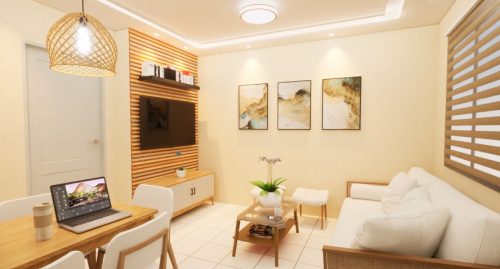Table of Contents
With many businesses striving to be more eco-friendly, there is a growing demand for sustainable lighting. Thanks to the development of new lighting technology and manufacturing practices, the lighting industry is setting an example of sustainability in action. In this guide, we’ll take a closer look at what these initiatives are and how they are contributing to a greener future.
What is Advanced Modular Lighting?

Modular lighting offers people greater control over their lighting solutions. It can be used in business premises such as offices and warehouses. Customers using modular lighting can create a variety of lighting designs for their interiors. They can also customise light levels or colours, as well as being able to increase or decrease the level of light output, depending on their needs. Advanced modular lighting has a range of features that enhance the customer’s experience, as well as bring environmental benefits.
The Benefits of Sustainable Lighting
It is an unfortunate fact that a lot of lighting products end up in landfills. These can sometimes contain hazardous substances that can be harmful to the environment. Sustainable lighting is recyclable, and it can also be repairable. Incorporating efficient technology also helps customers reduce their energy consumption. The eco-friendly aspects of modular lighting include:
LED Technology – Compared to traditional bulbs, LED lights are far more efficient when it comes to saving energy. Not only does this lower a business’s carbon footprint, but it can save them money on their energy bills too.
Waste Reduction – Different parts of modular lighting can be replaced as needed, rather than customers having to buy new replacements. Also, because many lighting parts can be repaired, it lengthens the life of the product. This means people can replace lighting far more cost-effectively, and it also cuts down on waste.
Smart Features – Smart controls are an eco-friendly feature of advanced modular lighting. For example, using sensors allows lighting to be controlled automatically. This has an impact on when lighting is used, for example, being turned off in empty areas, making energy usage much more efficient.
Compatible with Renewable Energy – modular lighting can be connected to renewable energy sources such as solar power or wind. For businesses with sustainability goals to meet, being able to use green energy sources for their lighting is a win for both the firm and the work environment.
Eco-Friendly Initiatives in Advanced Modular Lighting
Modular lighting designers are keenly aware of sustainability when it comes to their products. This encourages a collaborative approach to sharing ideas. In addition to this, many companies are open about their supply chains, so that customers can ensure that the products they are using are eco-friendly in more ways than just energy consumption.

Environmental aspects of a supply chain include the origins of components, and the distances and methods of transport used to import them. Following this comes greener methods of manufacturing, where factories employ a range of eco-friendly practices to create their products. Being transparent about every aspect of production helps to spread the word about eco-friendly practices within the lighting industry and encourages other businesses to do the same.
Another area in which lighting is becoming more sustainable is through the use of alternative materials, as well as those that are recyclable. Environmentally conscious lighting designers are exploring the use of bioplastics, as these naturally degrade, unlike petroleum-based plastics. Similarly, the use of recyclable materials, such as metals and glass, is becoming more common over single-use materials.
In the past, the only option was to throw lighting products away when they were broken or had reached the end of their life. With greener initiatives taking centre stage, many customers now have the option to have their lighting products refurbished, so they are as good as new. Not only does this benefit customers’ pockets, but it also reduces the need for manufacturing.
With all the advancements in technology in sustainable lighting, you may be wondering how much further it could develop. The good news is that there is still a huge potential to improve upon the eco-friendliness of lighting.
The Future of Eco-Friendly Lighting Solutions
As research continues, there are likely to be even more efficient ways of reducing energy consumption to power lighting. We can expect to discover better ways to create sustainable plastics, as well as other effective materials to use in lighting products. In recent years, there has been a huge shift towards sustainability in the lighting industry. Whether it’s for business premises or domestic homes, eco-friendly lighting is at the forefront of discussion.
The lighting industry is already leading the way in environmental innovations, but by developing existing technologies further, it is set to pave the way to an even more sustainable future.

